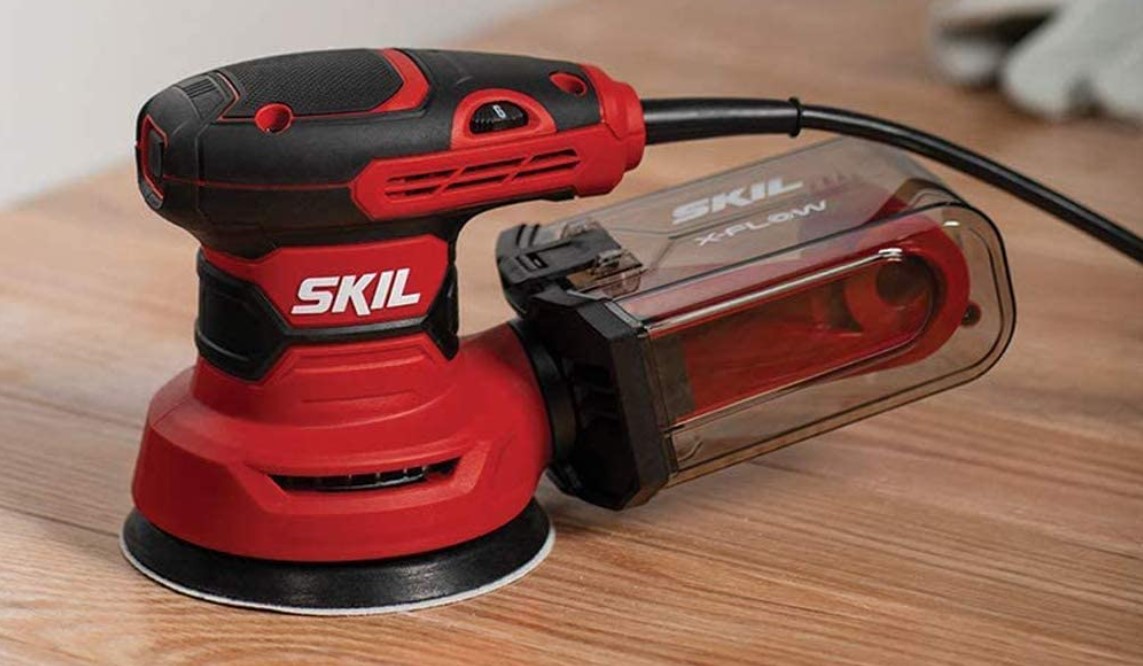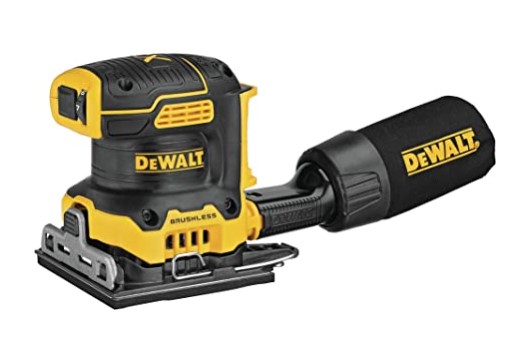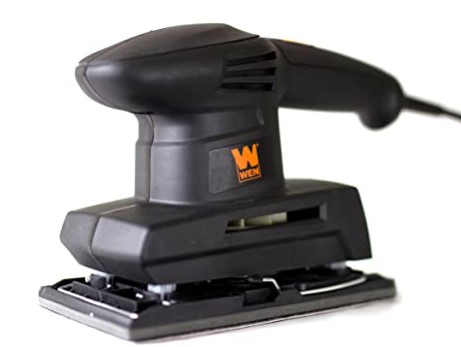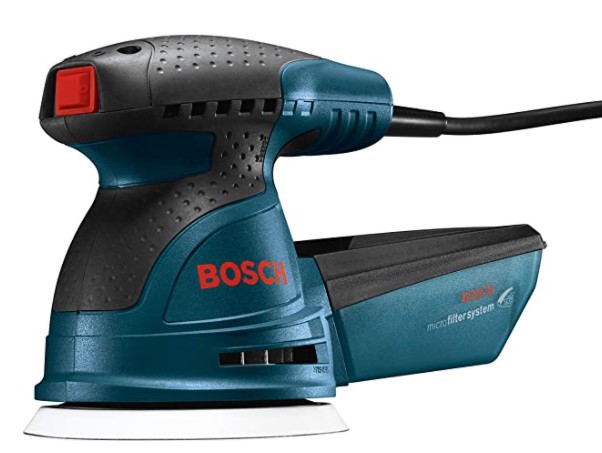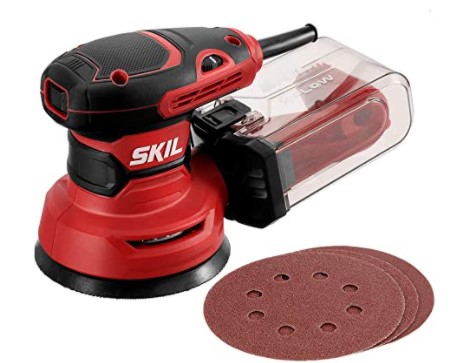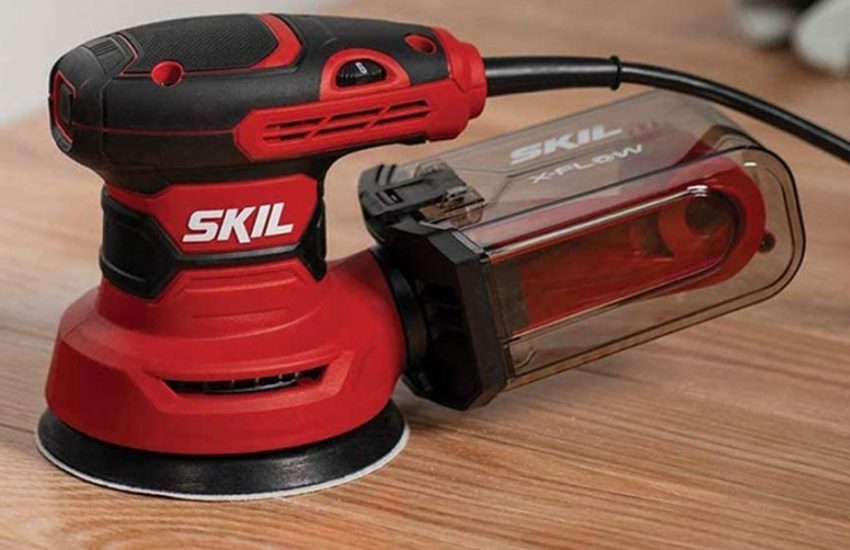Orbital Sander vs Palm Sander: Which One Do You Need?
Whether you are resealing, repainting, or repairing a surface, a sander is one of the most essential tools you can use. It makes easy work of stripping rust, paint, varnish, and other finishes from many types of surfaces. It also makes evening surfaces for a sealing or painting job super easy.
However, one mail issue DIYs have when it comes to buying a sander is deciding which one to buy. The different types of sanders are best used for different sanding jobs. And when you are a novice in-home project, picking the right tool for the job can be quite challenging.
Keep reading to learn the difference and what works best for your particular sanding needs.
Difference between an orbital sander and a palm sander
An orbital sander spins the sanding disc in circles like an orbit. A palm sander is a small sander that fits in your palm and is used to work or weird-shaped objects or surfaces. Orbital sanders are usually square-shaped, while palmer sanders have a triangular shape. These shapes are aimed to help when sanding crevices and corners as well as other weird angles.
What is a palm sander used for?
A palm sander is ideal for resurfacing furniture and removing paint, varnish, natural stains, or patina from wood or plywood. It requires manual movement and is, therefore, best for small to medium-duty jobs.
What is an orbital sander used for?
An orbital sander is used for fine sanding or evening-out surfaces before painting, sealing, or varnishing. It is better for larger projects as it does not require manual control to sand a surface.
Palm sander vs. orbital sander
Each type of sander works best for a particular need and type of project. While they can be substituted when it comes to general sanding needs, you may need to use one or the other for a specific purpose or type of surface when it comes down to the nitty-gritty.
The palm sander is only usable for small projects, whereas an orbital sander is best suited for larger commercial and heavy-duty projects. You can also use an orbital sander for DIY projects, but a sander will bog down when used continuously on a larger sanding project.
Is an Orbital Sander Better than a Palm Sander?
An orbital sander is more diverse when it comes to uses as compared to a palm sander. You can use it on a wide range of woodworking projects. You can also use it on other types of surfaces as well. It can also be sued on larger projects, whereas you can only use palm sanders to work on smaller projects.
Should I Get a Palm Sander or an Orbital Sander?
This depends on your sanding needs. You need to ensure that you get the sander that will be able to handle your sanding projects. An orbital sander will be your best bet when you regularly work on different types of wood and sizes.
Are Palm Sanders More Expensive than Orbital Sanders?
No. Orbital sanders tend to cost more than palm sanders on account of their size and functionality. Orbital sanders also tend to have more features as compared to palm sanders. Additionally, they are meant for use in a larger-scale project which requires a more powerful motor. Which in turn leads to a price increase.
It is still possible to get a palm sander that costs more than an orbital sander, but this would be because of the brand as opposed to the actual features of the sander itself.
What is the Best Palm Sander?
DEWALT 20V MAX XR Palm Sander (DCW200B)
The Dewalt palm sander features a brushless motor that provides runtime and efficiency to get the job done. It has variable speed control from 8 000 – 14, 000 OPM to match the application’s speed.
Its low profile height allows the user to get close to the work surface for precise sanding. It also features a paper clamp designed to hold paper securely and allow for easy installation. Its dust-sealed switch protects against dust ingestion for increased durability.
The sander has a one-handed locking dust bag to keep your garage floor clean that attaches securely to the sander to aid in dust collection. Lastly, its rubber over-mold grip provides comfortable sanding.
Features
- Grit Type: Fine
- Voltage: 20 Volts
- Item Weight: 2.9 Pounds
- Brushless motor
- Paper clamp
- Dust-sealed switch
- One-handed locking dust bag
Pros
- Variable speed control
- Low profile height
- Rubber over-mold grip
Cons
- Drains the battery too fast
WEN 6313 Electric Palm Sander
This Wen sheet sander features a 3-5/8 x 7-3/8-inch surface for sanding large faces. Its powerful 1.2 amp motor provides 12,000 OPM. The sander only weighs 3 pounds making it easy to use. It comes with a free dust collection bag that helps to minimize loose sawdust.
The sander has a Velcro base pad that allows for simple sandpaper removal and installation. Its hook-and-loop base pad makes for quick sandpaper changes as soon as the paper wears out and starts to gum while also still accepting regular non-hook-and-loop sandpaper.
Its sanding surface features edges that jut out past the sander’s body for sanding edges and corners. The sander has fan-assisted slots along the base’s underside to help collect unwanted sawdust and remove it via the dust collection port.
Features
- Fits 1/3-Sheet Sand Paper
- 1.2A Motor
- 12,000 Oscillations per Minute
- Vacuum Adapter
- Fan-Assisted Dust Holes
- Onboard clamps for non-hook-and-loop sandpaper
- Power Source: Corded Electric
- Item Weight: 3.6 Pounds
- Velcro base pad
- Hook-and-Loop Base Pad
Pros
- One-Year Warranty
- Lightweight
- Dust collection bag included
Cons
- Not ideal for heavy-duty sanding
What is the Best Orbital Sander?
Bosch ROS20VSC Sander
This orbital dander delivers a smooth finish using its Pad dampening system designed to eliminate swirl marks on both flat and contoured surfaces. Its signature Hook and Loop disc attachment system enable sanding pads to stick to the sander by acting like a Velcro adhesion material.
The sander features Variable speed Control, a 2.5 AMP motor, dampening ring, dust canister, vacuum adapter, and a soft backing pad. It also features a microfilter system for fine dust and trapping particles as small as a 1/2 micron in diameter. You can sand your deck without creating a mess.
Features
- Voltage: 120 Volts
- Power Source: Corded-Electric
- Amperage Capacity: 2.5 Amps
- Pad dampening system
- Hook and Loop disc attachment system
- Microfilter system
- Dampening ring
- Dust canister
- Vacuum adapter
Pros
- Smooth Finish
- Easy Disc attachment
- Variable Speed Control
- It comes with a carrying case.
Cons
- It is bulky
SKIL 5” Random Orbital Sander SR211601
This Skil random orbital sander uses a powerful 2.8-amp motor to rotate 13 000 orbits per minute. This enables it to deliver a smooth performance over a variety of sanding applications.
It features an easy-to-clean dust container that uses cyclone force to collect dust.
The sander has variable speed control that provides the right amount of power and control across different materials.
Its ergonomic design and soft rubber grip make it comfortable to use. Its counterweight balance reduces hand fatigue from vibration.
Features
- Grit type: medium
- Amperage capacity: 2.8 amps
- Grit number: 120
- 2.8-amp motor
- 13 000 orbits per minute
- Soft rubber grip
- Sand in tight places
Pros
- Easy to clean dust container
- Variable speed control
- Low vibration
- Ergonomic design
Cons
- The dust collector keeps popping off
Conclusion
At the end of the day, the best sander you can buy is the one that you can use for your particular project and get the results you expect. Ideally, an orbital sander should be able to handle your sanding needs from start to finish, but it costs more than a palm sander. And sometimes, a palm sander is all you will ever need.
